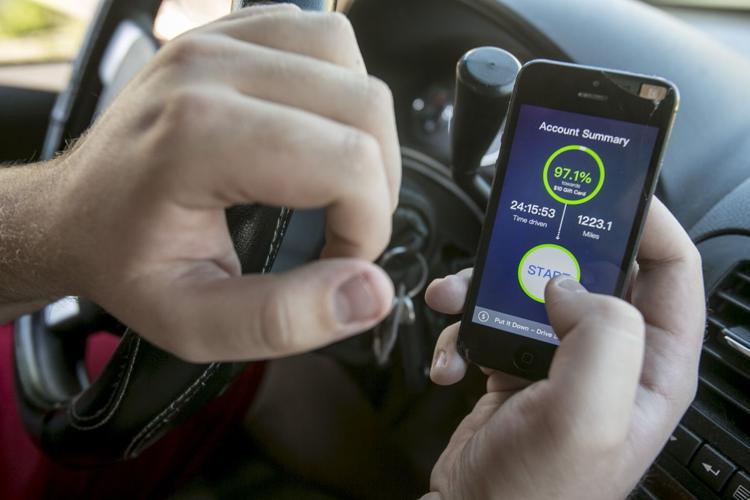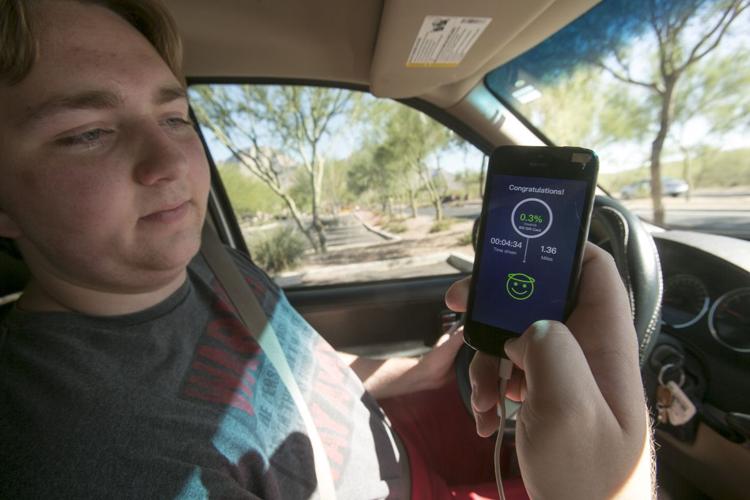‘Yeah,” Greggory Taylor said sheepishly. “It was definitely something I did.”
That something was texting while driving, or being otherwise distracted by his cellphone on his way to or from Ironwood Ridge High School, where he graduated in May.
Although no generation in the smartphone age is entirely innocent of the practice, federal data show that teens such as Taylor, 18, are among the most likely to be involved in accidents in which distracted driving played a part.
Since late March, however, Taylor said he gets in his car, sets down his phone and leaves it there until stopped or at his destination, even as messages and social media updates flood in.
So, what changed? A near-miss that drove the danger of distracted driving home? The county’s new texting ban, which went into effect last Thursday? Watching famed director Werner Herzog’s searing documentary-length anti-texting PSA “From One Second to the Next?” No, no and no.
Instead, it was the allure of an iTunes gift card that accomplished what many safety advocates and law enforcement officials have tried to achieve through legislation, ordinances and public outreach.
When he’s not texting while driving, a locally developed app on his phone called Down for the Count is adding up the hours he spends behind the wheel without using his device. When he makes it to his 10-hour or 25-hour goal, the gift card of his choosing is his.
“Once I activate it, if you even exit the app, it cancels the entire time you are driving,” he said. “You don’t even touch your phone.”
As to the relative weight between the app’s incentive-driven approach and the disincentive-based approach of the new county ordinance, Taylor said “the app carries more, because young people aren’t usually aware or don’t care of the consequences, and they just want free stuff. I’m guilty. I saw that it gives free gift cards, and now I’m hooked on it.”
Two local law enforcement officials told the Road Runner that ordinances and enforcement have important parts to play in cutting down on distracted driving, but that on their own they are not enough. They also agreed that apps like Down for the Count are a novel approach with promise.
Beyond that app, there are a number of smartphone applications that seek to cut down on distracted driving, like Cellcontrol, SafeDriver and Drivemode.
Sheriff Chris Nanos said “education,” especially with young people, is the most important part of an effective strategy.
Sgt. Michael Dietsch, Tucson Police’s traffic investigator supervisor, said the city’s ordinance on texting while driving, approved in February 2012, “is very difficult to enforce.” A 2014 Star story found that just 50 tickets were written for violations of the law over its first two years.
“It’s not enough just to have a law. You have to have enforcement and you have to have education,” said state Sen. Steve Farley, who has long advocated for a statewide ban on texting while driving. “Technology certainly has a piece of the puzzle.”
David Hazan, the entrepreneur behind the Down for the Count and a 2005 University of Arizona graduate, said Taylor and the other 2,000 or so mostly local and young users have driven “250,000 cellphone-free miles in Tucson” since his company started testing the app last year.
As a means to get young people to focus on the road and not on Snapchat, Hazan said his app has been a success. However, as a business the project has been “a wash” so far.
At the outset, Hazan was hoping the spread between what donors and sponsors contributed to buy gift cards and the actual price his company paid for those cards would be a reliable revenue stream. When accounting for transaction fees, however, he said he breaks even, and sometimes has to dig into his personal accounts.
Additionally, parents have put up around $1,000 for gift cards, with the company footing the bill for the rest of the roughly $6,000 that have been spent on incentives.
This columnist is slowly wheeling his way toward a $10 iTunes gift card with short bike commutes, and would rather not say if texting while pedaling was a vice of his before. (Yes, Road Runner will donate the gift card if successful, as much as this columnist would like to download the classic cycling movie “Breaking Away”).
Hazan said he hopes to find additional sponsors, but long-term the company will need more than that to be self-sustaining. One possibility is a partnership with car insurance companies, which have a vested interest in improving the habits of young people behind the wheel. A big national sponsor for gift card purchases wouldn’t hurt either, he said.
Whether there is a viable business model for the app is less important to Taylor, who has also gotten his parents to use the app, than the fact that it works for him and some of the peers he has recommended it to.
“I feel like it shouldn’t be so much about making a profit,” he said.





